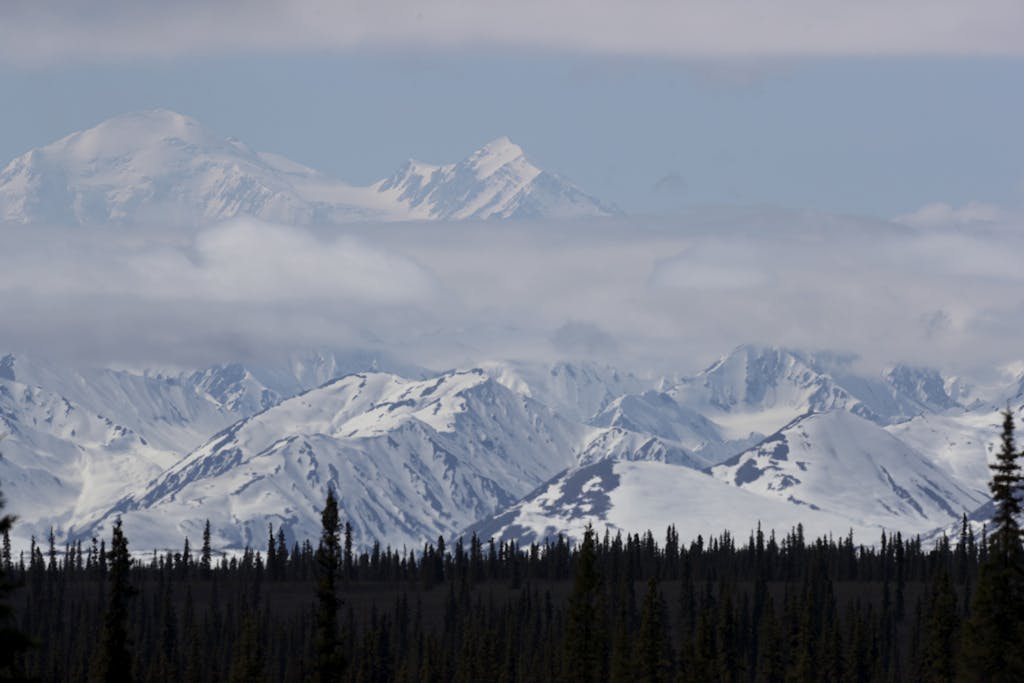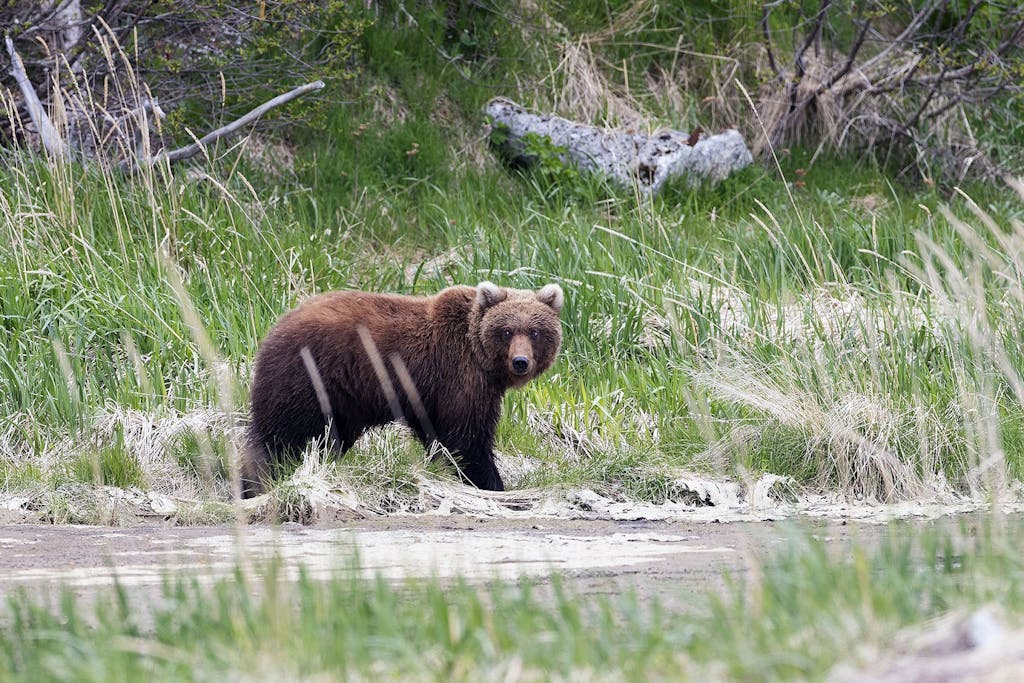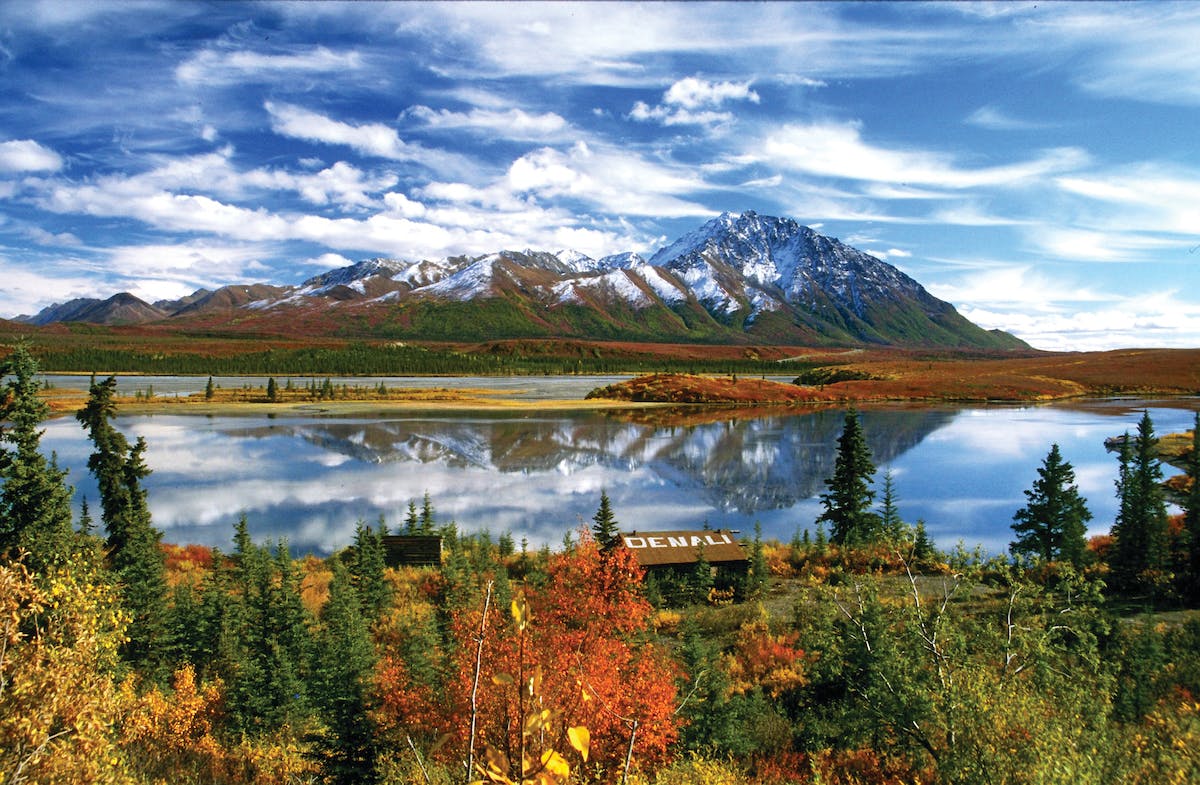An Alaska Park Ranger Shares Inside Tips on the Mighty Denali National Park
Immersing yourself in the vast wilderness of Alaska can be a life-changing experience, says Paul Ollig. He should know. Ollig is the lead interpretive park ranger at Denali National Park and Preserve, which encompasses 6 million acres of wild landscape in the state’s interior. Some days, when the weather cooperates, the Denali park ranger can see the namesake mountain, North America’s highest peak, on the way to work.
“There is so much beauty and so much majesty in this place, so much wildness to experience,” Ollig says. “There are very few places on the planet where you can find yourself in wild lands that are so accessible.”
For visitors, who come to the park from around the world, access to the Denali wilderness is via one 89-mile east-to-west park road. Private cars are restricted after the first 15 miles. Most people explore further via park-operated buses, which leave from a depot near the park’s entrance and run on a carefully regulated schedule.
A bus ride deep into this amazing Alaska park is stunning from the start. “You can have wolves pop out and cross the road in front of you. Or grizzlies strolling down the road as you pass by,” Ollig says. And that’s just in the first 15 miles of roadway.

The Denali “Big 5”
Like in some preserves in Africa, Denali has a “Big 5” wild animals that visitors hope to see: moose, wolves, bears (black and grizzly), Dall sheep and caribou. Ollig says if you add rare sightings of Canada lynx and wolverine, there’s actually a Denali “Big 7.”
Many of the animals are unbothered by the presence of humans. “The bears and the caribou and the moose and the wolves don’t really respond and react to the buses. They are just part of the natural landscape for them,” he says. “You can watch this wildlife interacting with each other in a very natural and undisturbed way.” Seeing wildlife in wide-open landscapes is a “rare and unique experience,” Ollig adds. “I would consider Denali to be akin to the Serengeti as far as how exceptional the type of experience is.”

The journey is the destination
The landscape itself also makes an impression. From bus windows, visitors to Denali experience the breadth and wildness of a wide-open and changing landscape, from lush boreal forest to taiga with tiny trees to high alpine tundra.
“The tree line is 2,800 feet above sea level this far north,” says Ollig. “Any time you get up above that it’s this amazing treeless landscape that you can see for miles and miles, and that’s inhabited by some of the largest land predators in the world that are just kind of doing their thing.”
Amidst expansive vistas, you may find yourself feeling like a small speck in a vast world where nature rules. “It can be really life-changing,” Ollig says. “It gives you a perspective that you can’t get anywhere else in the U.S.”
All buses stop at Stony Hill Outlook at Mile 62, the best viewing spot for the mountain (some buses go farther down the road). Visitors should prepare for the fact that sighting Denali is not guaranteed. “If you are lucky enough to see the mountain while you are in the park, you are in the 30 percent club,” Ollig says. “It’s so big, it creates its own weather and is often shrouded with clouds.”

Any season is a good season
The park’s climate itself is fascinating, changing from warmth in summer to sub-zero winters. For Ollig, who lives in Denali year-round, that’s part of the joy. In wintertime, the sense of remoteness is particularly intense, he says. “One of my favorite winter facts is that we have scientific equipment that has been installed out in the heart of the park, and our sound scientists have said that science has yet to invent equipment that can adequately measure the depth of the silence in Denali,” Ollig explains. “It’s so quiet that the computer doesn’t know what it’s hearing. It breaks the equipment.”
Springtime brings a flurry of activity among the animals. “The wildlife is waking up and really embraces the melting of the snow and the blossoming of the flowers and plants and the greening of the landscape,” he says. “And that flurry extends throughout the short summer.”
While predators thrive on ground squirrels, which park rangers refer to as “furry burritos,” both bears and humans seek out the bounty of berries in the park in fall.
A Denali park ranger’s favorites
Ollig has his personal favorites among the park’s creatures. “For me there’s nothing like seeing a wild wolf running through the landscape,” he says. “Nothing hammers home the health and significance of Denali’s wild landscape than seeing a wolf running across the tundra. Wolves are such a symbol of wild places, and they are indicative of a healthy and intact ecosystem.”
His favorite park secret has to do with the resident sled dogs. Dogs have worked in the park for 100 years, and are jokingly referred to by the rangers as “bark rangers.” The dogs live in professional kennels, and with snowmobiles and other motorized transportation banned in 2 million acres of the preserve, they are critical employees. “They aren’t racing dogs. They aren’t tourist dogs. They are freight-hauling,” Ollig says. “We would not be able to effectively manage the park without those 34 sled dogs.”

When visiting Denali, Ollig says people should breathe deep and open their eyes to the expansive landscape and vistas.
“It’s an opportunity to connect with something deeper in ourselves that not only needs wild places but yearns for them,” he says. “It’s a reconnection with that primeval part of all of us.”
Silversea guests visit Denali as part of five-day pre-and post-cruise packages. You reach Denali National Park and Preserve via a fascinating ride on the Alaska Railroad, crossing historic bridges over rivers and traveling over deep gulches. You may even spot the mountain from your viewing-dome topped rail car. Your two nights in Denali include accommodations at the rustic, Native corporation-owned Grande Denali Lodge, near the park entrance. On Summit tours you visit the park, along with other travelers from around the world, on a Tundra Wilderness Tour — exploring 62 miles into the park, lunch included. On Denali by Air tours, you travel the entire park roadway to a backcountry lodge in the community of Kantishna, where after lunch you have the option of a nature walk or visiting a historic cabin hand-built by mining pioneer Fannie Quigley. Then you have the thrilling opportunity to see Denali by air on a flight back to the park entrance.
Ready to head to Alaska? Find a cruise here.
